Figures
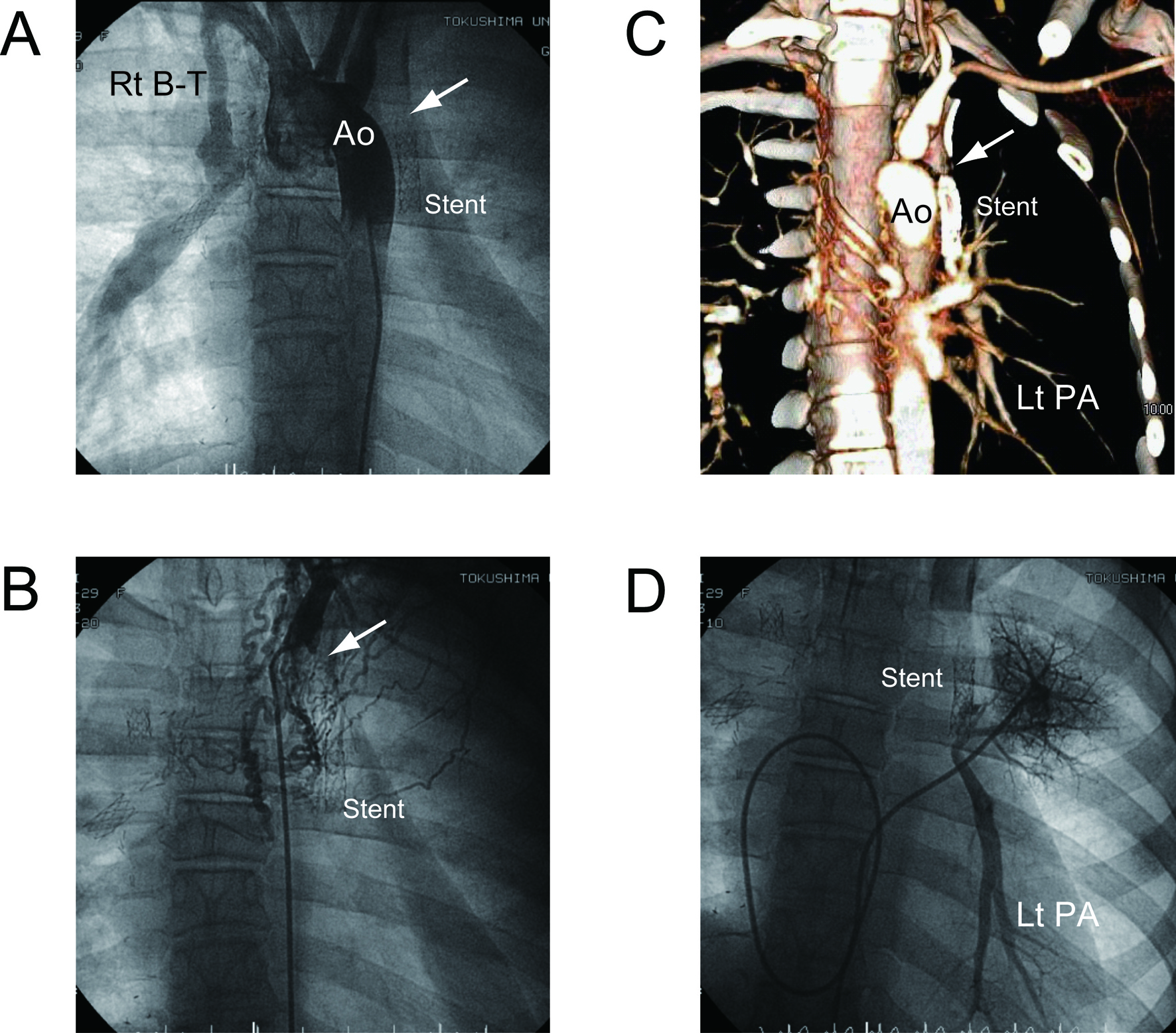
Figure 1. Total occlusion of left modified B-T shunt in a 19-year-old female with a single ventricle. (A) Aortography showing occluded left B-T shunt (arrow) and patent right B-T shunt. (B) Selective left B-T shunt angiography is impossible (arrow). Numerous small torturous collateral arteries originate from left subclavian artery. Patency and caliber of left pulmonary artery is not visualized. (C) MDCT angiography showing occluded B-T shunt (arrow) and patent left pulmonary artery. (D) Pulmonary vein wedge angiography clearly showing left pulmonary artery. Ao, aorta; Rt B-T, right modified B-T shunt; Lt PA, left pulmonary artery. Reproduced with permission from International Journal of Cardiology 2011, Elsevier limited.
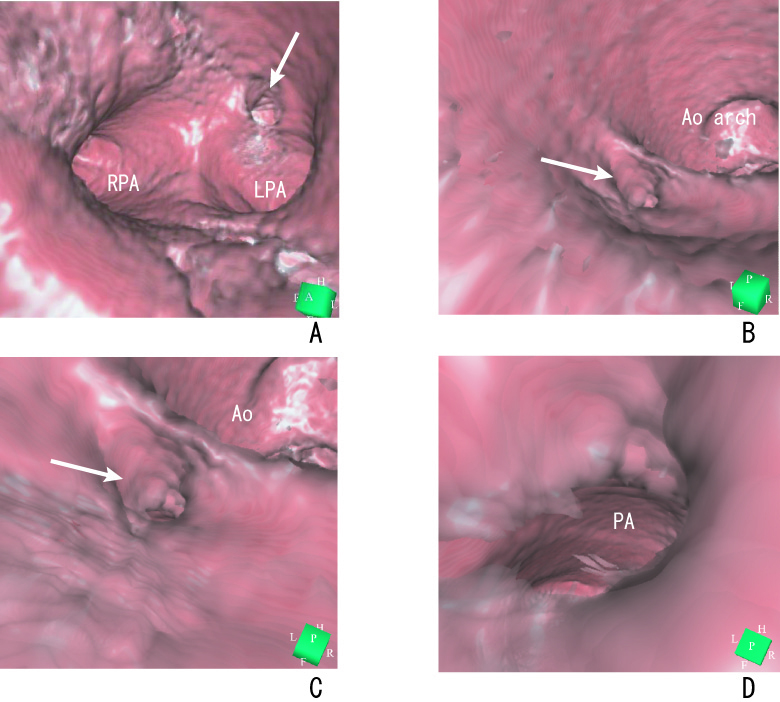
Figure 2. A 13-year-old girl with PDA. (A) Virtual endoscopic image shows the view from the distal main pulmonary artery, with the left pulmonary artery (LPA) and right pulmonary artery (RPA). PDA (arrow) is visible in the main pulmonary artery adjacent to the left pulmonary artery. (B) View from the descending aorta shows the ridge between the aorta and the ductus arteriosus (arrow). (C) View from the descending aorta shows the orifice of the ductus arteriosus and ampulla (arrow). (D) View from the ductal ampulla shows pulmonary artery (PA) visible through the ductus. Ao, aorta; LPA, left pulmonary artery; RPA, right pulmonary artery. Reproduced with permission from Catheterization and Cardiovascular Interventions 2007; 70: 434-439, Wiley-Liss, Inc.
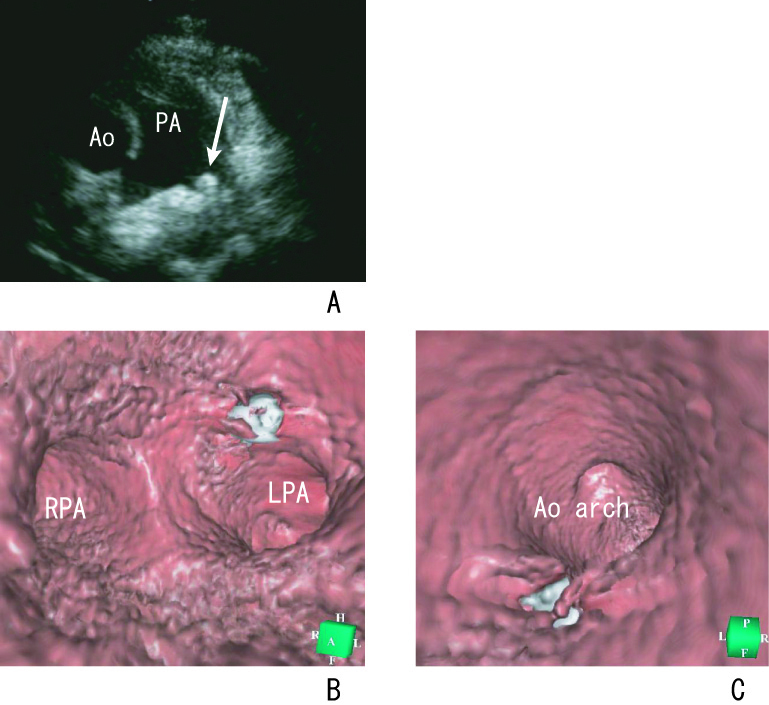
Figure 3. A 6-year-old boy with PDA who underwent transcatheter coil occlusion. (A) Transthoracic echocardiogram shows the coil in the left pulmonary artery. Coil protrusion (arrow) is suspected. Virtual endoscopy shows the location and protrusion of the coil from the pulmonary (B) and aortic (C) sides. The left pulmonary artery is not obstructive. Ao, aorta; LPA, left pulmonary artery; RPA, right pulmonary artery. Reproduced with permission from Catheterization and Cardiovascular Interventions 2007; 70: 434-439, Wiley-Liss, Inc.
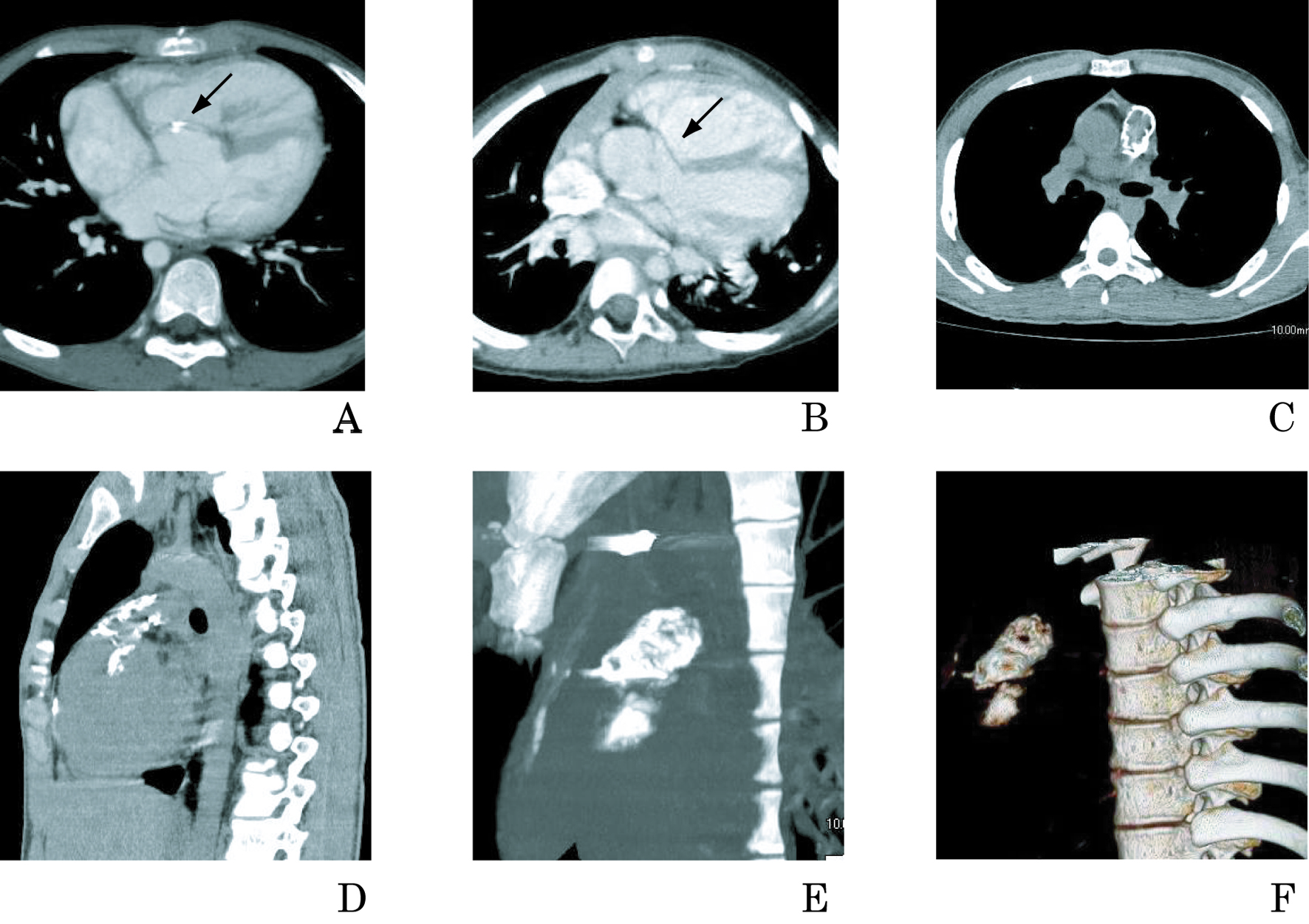
Figure 4. Multidetector-row computed tomographic views of PTFE grafts used for VSD patches and RVOT prostheses. (A) Five-year-old boy with tetralogy of Fallot (TOF) who underwent complete repair with placement of a VSD patch. The axial view reveals spot calcification (arrow) on the VSD PTFE patch. (B) Twelve year-old boy with double outlet right ventricle (DORV) who underwent complete repair with placement of a VSD patch. Multiplanar reconstruction images show VSD patch (arrow) in the axial slice. No calcification is detected. Twenty-year-old man with TOF who underwent complete repair with placement of PTFE graft in RVOT reconstruction. Multiplanar reconstruction images show severe calcification of RVOT in axial (C) and sagittal (D) views. Maximum intensity projection (E) and volume-rendered reconstruction (F) provide spatial and 3D aspects. Reproduced with permission from American Heart Journal 2007; 153: 806.e1-8, Mosby, Inc.
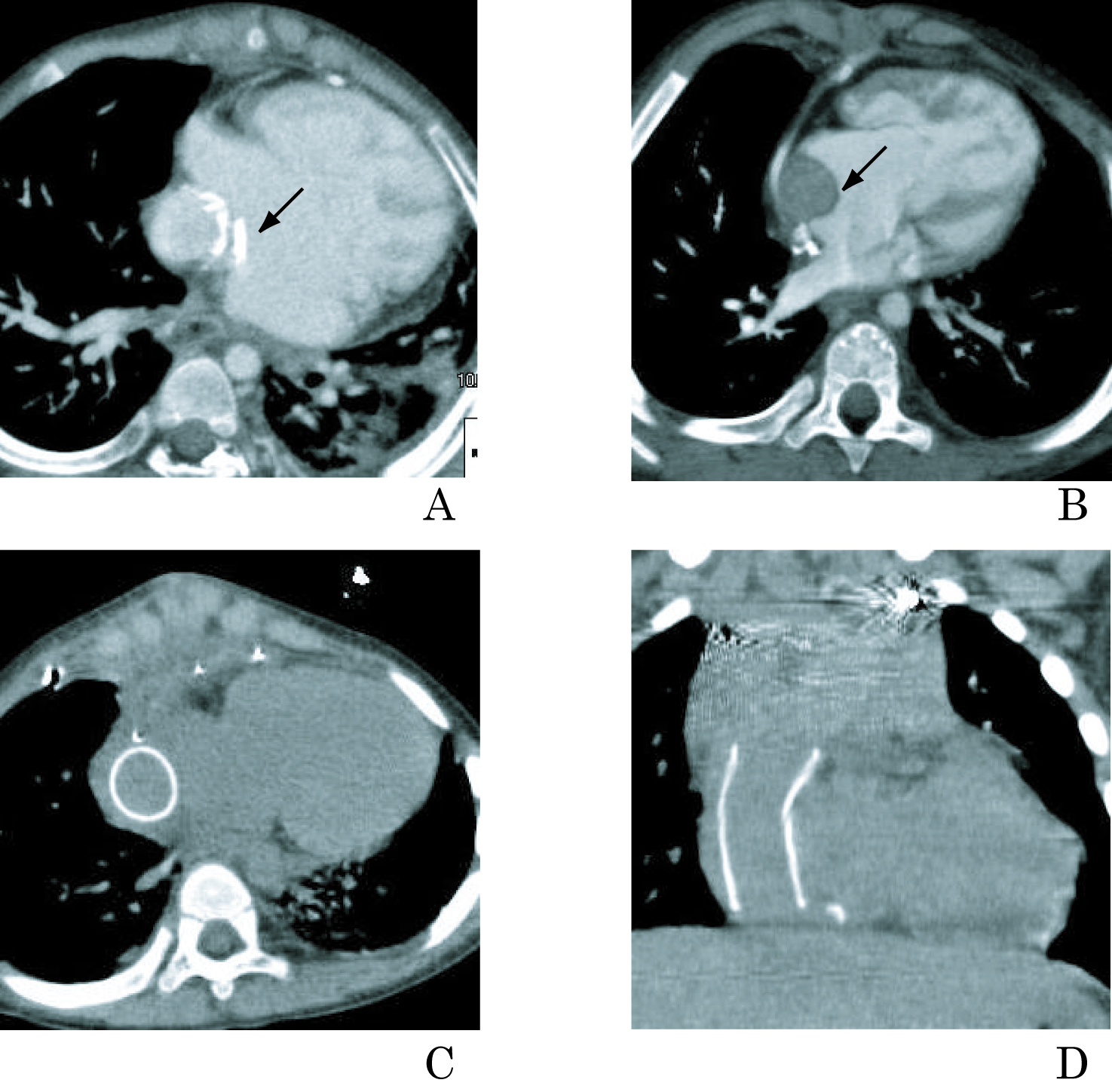
Figure 5. Multidetector-row computed tomographic views of polytetrafluoroethylene (PTFE) grafts used for atrial septal patches of Fontan procedure and extracardiac conduit of total cavopulmonary connection (TCPC). (A) Four-year-old girl with single ventricle who underwent lateral tunnel Fontan operation. Calcified intimal hyperplasia (arrow) is revealed on both sides of the atrial PTFE patch. (B) Four-year-old boy with DORV who had undergone lateral tunnel Fontan modification. Atrial septal patch (arrow) is clearly shown; no calcification is detected. Four-year-old boy with single ventricle who underwent extracardiac TCPC. Unenhanced MDCT was performed. The PTFE graft conduit is clearly shown with homogeneous high density in the axial (C) and coronal (D) views. Reproduced with permission from American Heart Journal 2007; 153: 806.e1-8, Mosby, Inc.
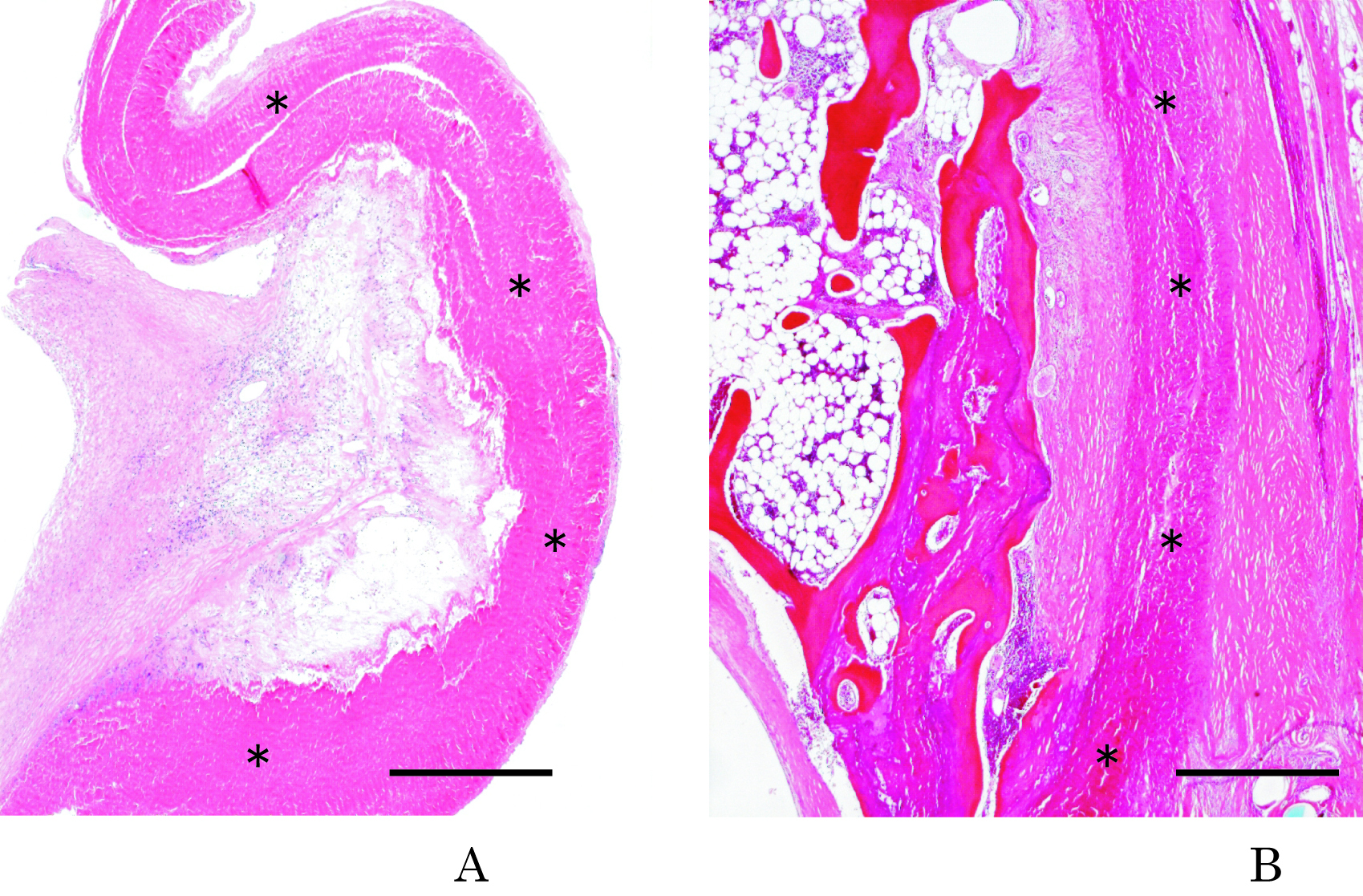
Figure 6. Histologic study. (A) Hematoxylin-eosin–stained section of PTFE (asterisk) obtained from the center of the graft after 2 years of implantation. Perigraft collagenous tissue infiltrates the microfibrous PTFE prosthetic wall. Hematoxylin-eosin stain indicates the presence of fibroblasts, collagen fibers, and neutrophils; the ingrowth of perigraft collagenous tissue in PTFE prostheses is revealed. Neovascularization is demonstrated in this area. The patient’s MDCT scan is shown in Figure 5B. (B) The PTFE patch layer is identified (asterisk); the prosthetic PTFE patch is encircled by excessive collagenous tissue. Bone formation with dystrophic calcification is visible on the left of the field: the bone formation appears eosinophilic, and the calcification appears basophilic. The patient’s MDCT scans are shown in Fiure 4C-F. Bar = 500 µm. Reproduced with permission from American heart journal 2007; 153: 806.e1-8, Mosby, Inc.
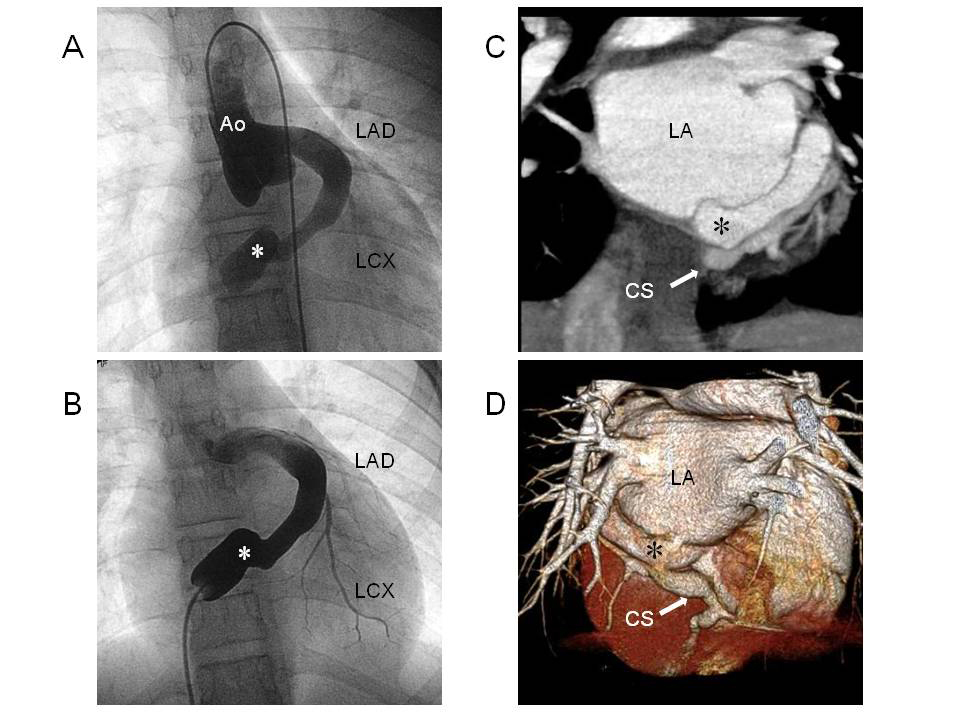
Figure 7. Coronary artery fistula in a 12-year-old girl. (A) Aortography shows an abnormal vessel draining into the right atrium. (B) Retrograde angiography shows that the left circumflex artery originated from this abnormally dilated vessel. (C) MDCT demonstrates that the coronary sinus is present next to this vessel. (D) A three-dimensional, volume-rendered image was useful for distinguishing the abnormal vessel from the coronary sinus. Ao, aorta; LAD, left anterior descending artery; LCX, left circumflex artery; LA, left atrium; CS, coronary sinus. Reproduced with permission from Pediatric Cardiology 2010; 31: 168-169, Springer Science+Business Media, LLC.
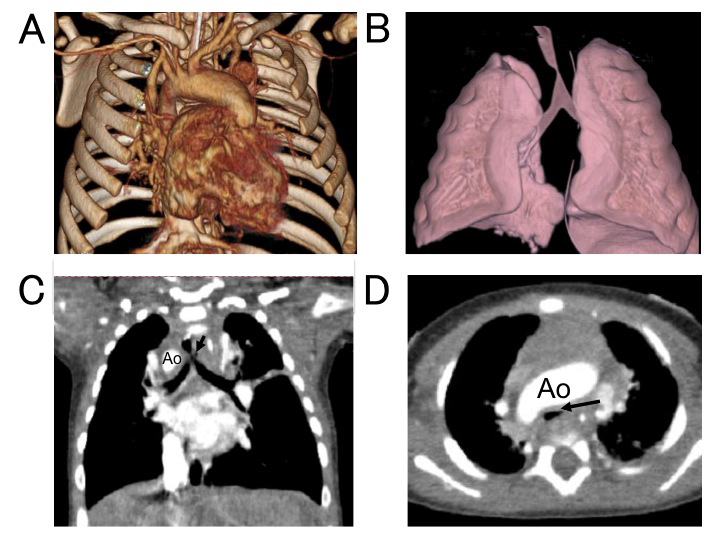
Figure 8. Tracheal compression by aortic arch in a 2-month-old child with corrected transposition of the great arteries (L-position), ventricular septal defect/pulmonary atresia. (A) 3D image in a patient with an right aortic arch. (B) 3D image of tracheal compression. Coronal (C) and horizontal (D) view of tracheal compression (arrow). Reproduced with permission from Pediatric Radiology 2009;39:148-153, Springer Verlag.
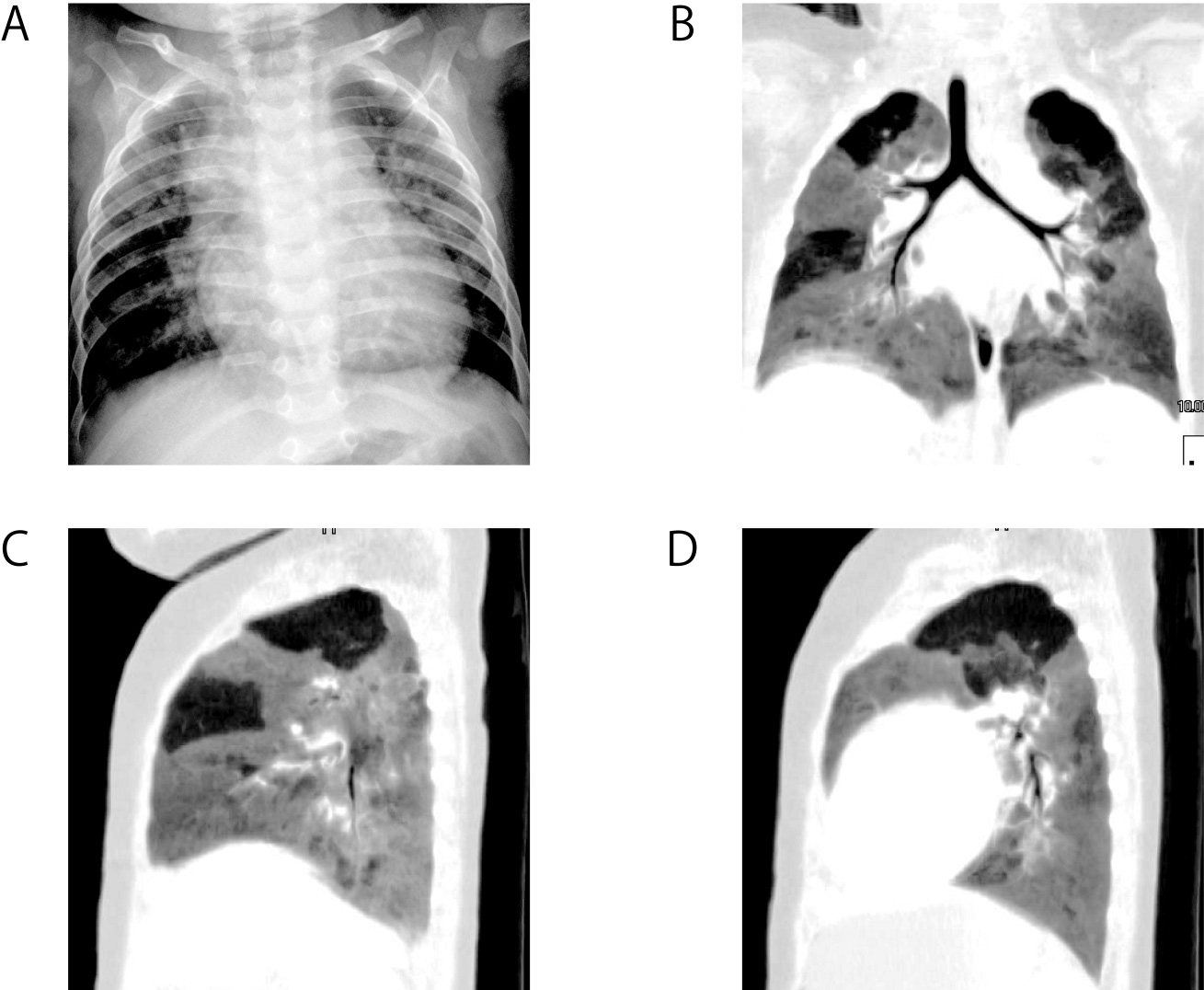
Figure 9. A 6-month-old girl with ventricular septal defect. Emphysematous change is not recognised with chest X-ray (A). Coronal view (B), sagittal view of right lung (C), and sagittal view of left lung (D) minimum-intensity projection imagings show that there are segmental emphysema in S1, 4 of right lung, and S1-2, 6, 7-8 of left lung. Reproduced with permission from Heart, Lung and Circulation 2011, Elsevier limitied.








